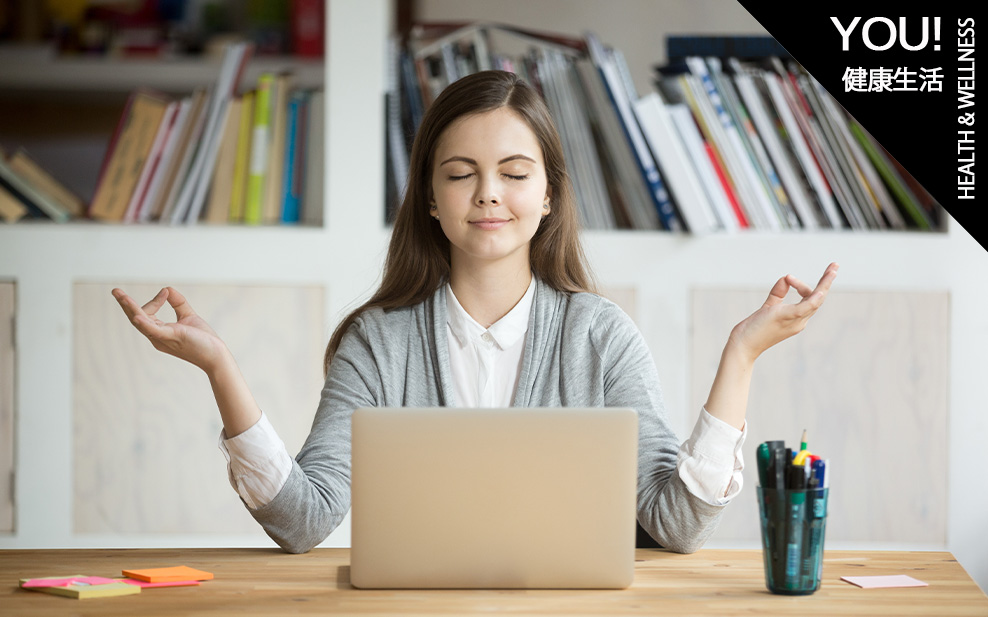
I’ve been there, many times. For years I thought it was ‘normal’. The constant frantic calls from clients making (mostly) ludicrous demands, my boss constantly reminding me of my monthly targets, and my colleagues’ seemingly enhanced hour-by-hour attempts to sabotage my work! I thought this was how it was ‘supposed to be’!

So yes, I’ve been there, and I know that many of you may be there now or have been there too: that is to say, overwhelmed at work. The great news is that is not how it’s ‘supposed to be’. If your experience is even a bit like the one described above, fear not, there is a better way. You cannot control the actions of others at work, but there are powerful ways that you can feel more grounded, productive and creative at work. It starts with focusing in on what IS in your control and cultivating mindfulness.
What is mindfulness?
According to the New York Times, mindfulness is ‘paying attention to the present moment in accepting…a simple practice…for reducing stress’. Mindfulness is the ability not to be yanked around by your own emotions, which can have a big impact on your work life, according to Dan Harris, the author of the book 10 Percent Happier.
Yet, many of us lack mindfulness at work due to a variety of stressors that can catch us off-balance or unaware. This is a large problem for society as adults tend to spend most of their time at work. In a busy city like Hong Kong, that can mean over 80 or more hours of work a week.
It can be hard to stay present and productive at work when anxious thoughts and feelings pervade your mind. This can distract you from your goals and lead to prolonged feelings of stress. Have you ever been at work unable to focus on your next task due to feelings of anxiousness about all that’s on your plate or why some other task is yet to be completed? I’m guessing we all have at some point. If this is replicated over time, this stress can manifest itself as mental and physical ailments that run against our wellbeing.
That’s why it’s crucial we all develop tools to practice reducing stress through mindfulness. Below, I’ve compiled a short-list of easy activities you can add to your routine that have helped me and are sure to reduce and even eliminate anxiety at work.
Hacks for cultivating Mindfulness at work
- Take a break (no matter how small)!

When performing a stressful or challenging task, one approach is to just push through and get it finished. The other, healthier way, is to pause, reflect and analyse what is really happening, then proceed accordingly. An article by the BBC reported that even micro-breaks of 27 seconds can reboot the brain and enhance focus.
When you pause, you are consciously ‘applying the brakes’ on your thought process or task. By pausing, you can stop your brain into getting caught up in strong emotions. Here, you can ask yourself, ‘What am I doing?’ ‘Why am I doing it?’ ‘What do I feel right now in my body, physically and emotionally?’ ‘Am I okay with this?’ ‘Am I learning anything’?
You don’t need to find answers to these questions, but it is important to pause and actively ask them. Create your own questions along the same lines, ensuring they and your answers make sense according to your task. Soon, you will find yourself actually enjoying ‘applying your brakes’ whenever you need it.
Extra tip: Be sure to take micro-breaks no less than every 40 minutes and no more than every 90 minutes.
2. Move your body and get out of your head!



When you are focused on a task, focus and do nothing else. But when you are on a bathroom, or lunch, or water-cooler break, move and be playful. For instance, you could try some tennis ball exercises like juggling 3 tennis balls. Or you could solve a Rubik’s Cube, perform 3 push ups, arm-wrestle your colleague, walk backward on a familiar route in both directions, or just do some stretching.
According to Forbes, most people are the least happy and mindful when they are just sitting for long periods. In one research experiment, seniors were instructed to take note of their breath, physical and bodily sensations, etc., while performing light exercises. After the session, researchers noted that their depression and anxiety levels dropped significantly.

Lastly, dance. I think it’s a bit weird when I am standing next to someone with earphones on, music blasting and they are as stiff as a corpse. Put on some headphones and stand up, walk around, sway, sing (softly), shimmy or whatever movement makes sense to your body to the beat! Perhaps then, you will really find yourself looking forward to bathroom/water-cooler/lunch breaks! I recommend sticking to 60 minutes, however, if you are with colleagues, go ahead and recommend that you all take a movement break! The more, the merrier!
3. Find your feet, practice grounding

Taking yourself out of your comfort zone and trying new tasks can often be beneficial, as it encourages mental and physical adaptability and resilience. However, too much too quickly, and the mind can feel overwhelmed.
Have you noticed that the more tasks you are given, the more you feel like things are getting out of your control; like the rug is being pulled out from under you?
When you are feeling off kilter like this, you can try a practice called “grounding.” This technique of allowing your body to reconnect you to where you are in space helps to sooth feelings of loss of control and can shift your brain chemistry away from anxiety
Below I’ve listed some suggested practices that have helped me reduce my anxiety atwork. Ideally this routine should take between 3 to 5 minutes to complete. I also highly suggest you make an effort to silence your phone and other distractions for maximum effectiveness:
- Sit on a firm chair with your back supported by the seatback and hips as much to the rear of the chair as possible.
- Place your palms loosely on your thighs, facing upwards. Your feet should ideally be in contact with the floor. Ensure your clothes are as loose as possible.
- Close your eyes
- Breathe in long and deeply, then relax completely as you exhale. Do this three times.
- Observe your feet. Where are they? Are they warm, cool and comfortable? Can you feel the floor through your socks and shoes? What is the texture and temperature? Do you feel supported by your feet?
- Ask if your feet feel supported by your chair?
- Observe your breath. Is it relaxed? Are you holding it in? Do you still feel tension? Where do you feel it?
- Observe your thoughts. What are you thinking now? Do you remember where you are?
- Softly move your toes.
- Observe your breath again. How is it now? Are you breathing in a relaxed manner? How do you feel?
- Slowly open your eyes.
Easy enough right?
4. Make time for a proper (mindful) lunch

It can be tempting to grab a bite on the run (literally) or quickly gulp down your sandwich at your desk in between tasks. In terms of staying mindful at work though, eating in this way is a big no-no!
Consistently rushing through your meals leads to stress, indigestion, other gastro-intestinal issues. My suggestion is to start viewing lunch as a crucial part of your routine. Ideally you should carve out at least 40 minutes to sit and eat slowly.
I view this final point as the most important. Eating is tied to your mental and physical wellbeing more so than all the above points. If you can practice only one point on my list, then it should be this one.
Congratulations! You now have powerful and simple mindfulness tools to seamlessly incorporate into your day whenever you need them. If you use them daily, you will soon not only feel noticeably calmer and relaxed, but will be more productive, make better decisions and become a leading example in the workplace.
- For Tennis Ball exercises, check out this video: https://www.youtube.com/watch?v=P_pxajnfCj4
- For examples of physical activity in the workplace, check out these guidelines from the Centre of Disease Control (CDC): https://www.cdc.gov/workplacehealthpromotion/initiatives/resource-center/pdf/Workplace-Physical-Activity-Break-Guide-508.pdf
Disclaimer: “Views and opinions expressed in this article are the solely that of the author and should not be considered professional medical advice. Any action taken from this advice is strictly at your own risk. We will not be liable for any losses or damages in connection with the use of this information, or any other information posted on this website.”
About the author: Born from a natural desire to constantly enhance life, once Rahul Kalra’s own was well established, he turned outward toward helping others.
He founded Holistic Bodywork Therapy to embody empowerment, in whatever way serves each individual best.
Rahul is available for customized bodywork therapy sessions aimed at improving physical health from chronic pain, weak immunity, poor digestion in addition to enhancing emotional health from PTSD, chronic stress, post breakup-depression and eating disorders.
Email him at: Rahul@holistic-bodywork-therapy.com
Written exclusively for WELL, Magazine Asia by Rahul Kalra.

Thank you for reading this article from WELL, Magazine Asia. #LifeUnfiltered.
Connect with us on social for daily news, competitions, and more.





